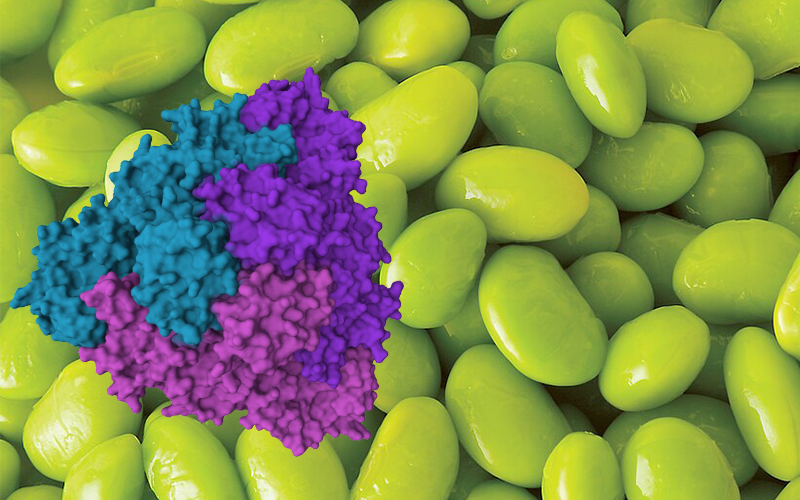Science on a shoestring: inspiring experiments with everyday items Inspire article
Low cost, high impact: try these creative and engaging experiments that use inexpensive everyday materials to bring curriculum science to life.
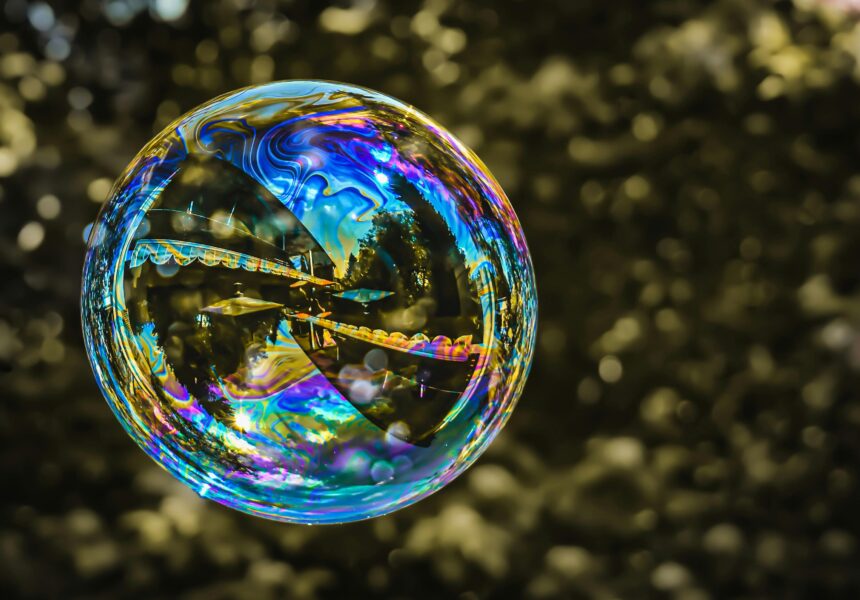
Hands-on experiments are an essential part of science teaching, but while some schools have extensively equipped science labs and workshops, many schools have much more limited resources, and some science teachers don’t have any access to dedicated science facilities at all. However, science is all around us and there are many engaging science experiments that can be done with common and inexpensive materials. Better yet, low cost isn’t the only advantage of doing experiments with everyday materials: experimenting with materials, objects, and phenomena that students recognize from everyday life can place scientific concepts in context, help engage students who think science is boring and difficult, and show students the relevance of science in our daily lives. After all, the goal of science teaching is not just to inspire the next generation of scientists, but also to educate the next generation of citizens.
With this in mind, we have put together a collection of 14 Science in School articles that present activities based on inexpensive everyday items without compromising on science content or learning.
1. Science in a toilet-paper roll

Target age: 11–14, 14–16, 16–19
Subject: Chemistry, Engineering, Physics
Despite experiencing a moment in the spotlight during the COVID pandemic, the humble toilet roll may not, at first glance, seem like an inspiring basis for scientific experiments. But looks can be deceiving! Toilet paper, along with a few other inexpensive materials like water, oil, and marker pens, can be used to explore anisotropy; friction and intermolecular forces; capillary action and chromatography; and refractive indices. Can you afford not to try these simple and creative experiments?
2. Physics with everyday objects: springy sweets, a universe in your pocket, and drawing circuits
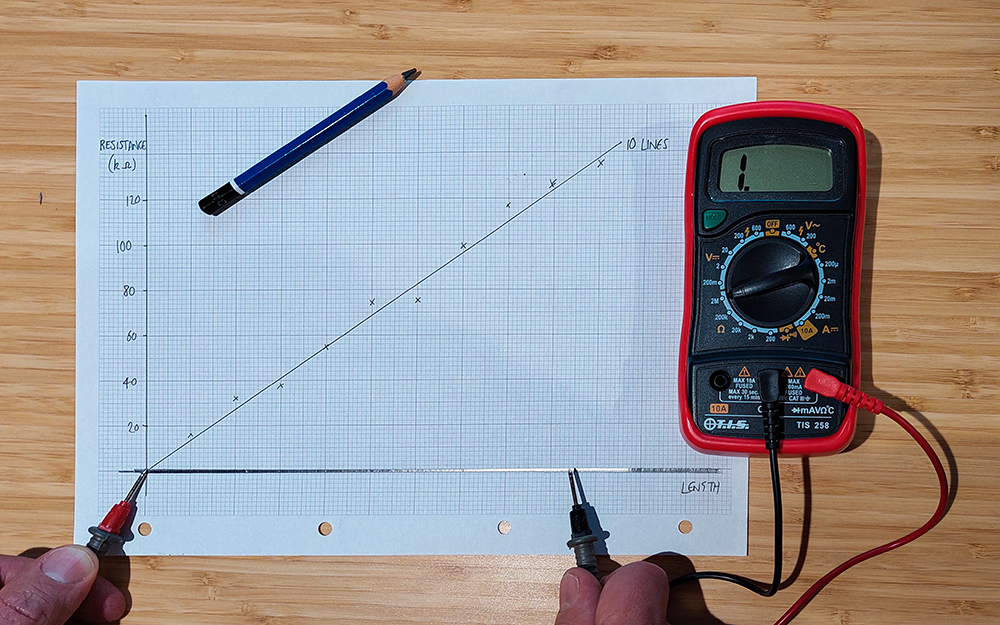
Target age: 11–14, 14–16
Subject: Astronomy/space, Physics
Much of curriculum physics concerns physical laws that explain the way the world around us works, so there are plenty of opportunities to demonstrate core physics concepts with everyday articles in a way that helps students understand and engage with them. The classical Hooke’s law experiment can give students the impression that Hooke’s law is a special property of springs; why not try it with marshmallows or fruit laces instead? Or what about using the conductive properties of graphite in pencils to draw your own circuits? This experiment requires a multimeter, but is an excellent way to reinforce the relationship between length and resistance.
3. My favourite experiments – connecting teachers and ideas
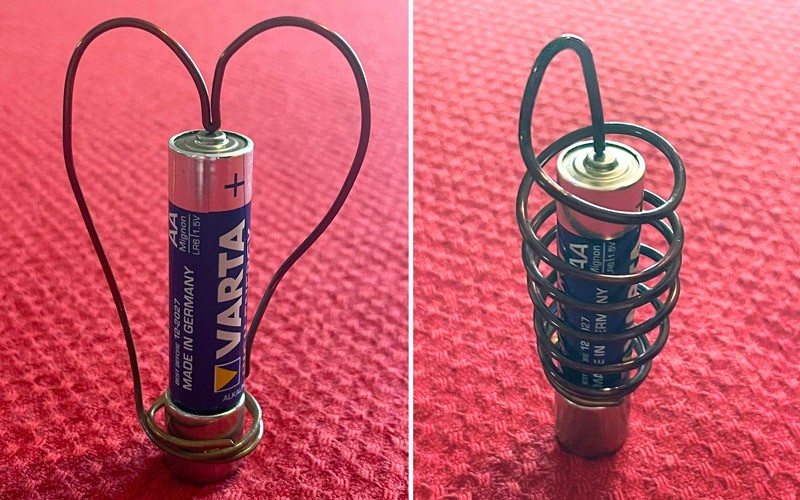
Target age: 11–14, 14–16, 16–19
Subject: Physics
Here is another set of simple physics activities with everyday objects from the ‘My favourite experiments’ project. Build a beer-bottle thermometer from a glass bottle, a balloon, and some tubing and use it to discuss topics from thermal expansion to thermodynamics; make a ‘greedy cup’ out of a plastic cup and some tubing to demonstrate the syphon effect in a fun way; or explore circuits and electromagnetic induction by building simple and creative homopolar motors with a battery and some copper wire.
4. The birth of electrochemistry: building a simple voltaic pile
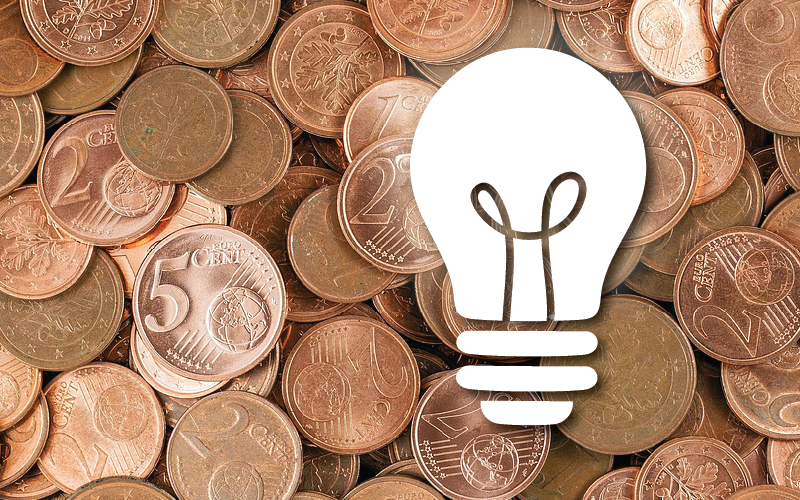
Target age: 14–16, 16–19
Subject: Chemistry, Engineering, Physics
Ask students when they think batteries were invented, and they will probably guess that they are a recent invention, but the first electric battery – Volta’s voltaic pile – was demonstrated in the early 1800s! Use simple household materials like copper coins and aluminium foil to recreate his famous experiment while also learning about the birth of electrochemistry and the historical debate between Volta and Galvani. This topic gives students insights into the nature of science, with discoveries and theories being tested and debated within the scientific community until consensus is reached.
5. Simple biofuel cells: the superpower of baker’s yeast
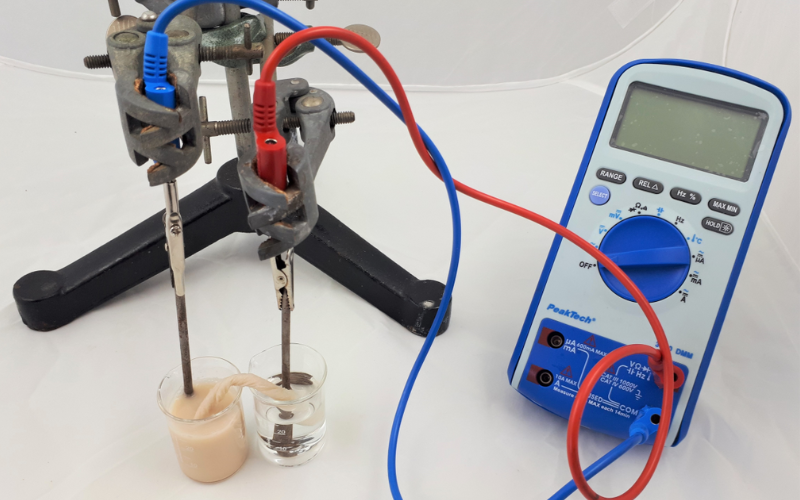
Target age: 11–14, 14–16, 16–19
Subject: Biology, Chemistry, Sustainability
The development of efficient and practical biofuel systems is a hot research topic, but the basic principle can be demonstrated with common everyday materials by using yeast as a biocatalyst. The only lab equipment required is a multimeter; otherwise, all you need is yeast, sugar solution, some simple electrodes like iron nails, and a sheet of toilet paper (our friend the toilet roll again!). This brings together multiple curriculum topics, including enzymes, metabolism, microbiology, redox reactions and electrochemistry, energy production, and sustainability. This would also pair well with the voltaic pile activity described above.
6. Investigating the action of urease
Target age: 14–16, 16–19
Subject: Biology, Chemistry
Did you know that you can explore the key topic of enzymatic reactions using soy beans as a source of urease, along with a few other readily available materials like red cabbage, citric acid, baking soda, and fertiliser urea? Test tubes are suggested but other clear or white containers could also be used. Extracting the enzymes directly from a familiar organism, rather than a vial, can make the topic seem less abstract. Saliva and liver are commonly used, but soy beans avoid the potential biohazards of these sources. As long as nobody has a serious soy allergy, it also makes the activity more inclusive by avoiding animal products.
7. Tea-time chemistry
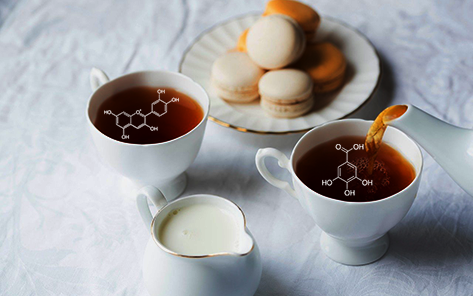
Target age: 14–16, 16–19
Subject: Chemistry
Teas are infusions of plant matter, and plants are impressive little chemical factories! Teas contain diverse mixtures of chemicals that give them their unique flavours, and some, like caffeine, that produce physiological effects. This makes teas interesting reagents for chemistry experiments. Try using butterfly pea tea as a pH indicator; detecting the tannins in black tea using steel wool; or investigating redox reactions with hibiscus tea. The first two experiments don’t require any specialized reagents and can be done in any white or clear containers if test tubes aren’t available. The butterfly pea tea indicator could even be tested in droplets using microscale chemistry techniques.
8. An ocean in the school lab: carbon dioxide at sea

Target age: 11–14, 14–16, 16–19
Subject: Chemistry, Earth science, Science and society
All students know that CO2 is a greenhouse gas, but they may be surprised to learn that it also dissolves readily in water to form carbonic acid, so rising CO2 levels cause ocean acidification. Students can see this for themselves by blowing bubbles into an indicator solution with a straw. Alternatively, they may lower a burning splint into a container of indicator, or create CO2 by reacting baking soda and vinegar and then ‘pour’ it into the container. That you can pour a gas (denser than air) also surprises many students! Finally, testing the effect of pH on calcium carbonate solutions illustrates why ocean acidification creates serious problems for marine life.
9. Beyond solids and liquids: the science of slime
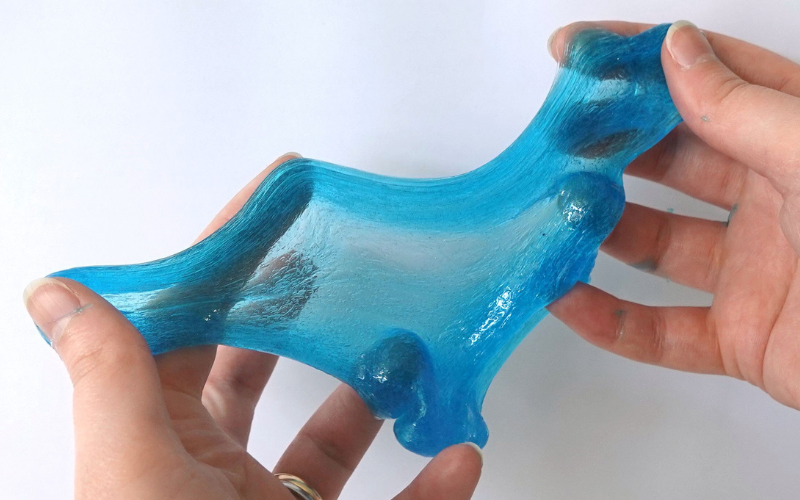
Target age: <11, 11–14, 14–16
Subject: Chemistry, Engineering, STEAM
Many students will have already seen videos of making ‘slime’, which often feature specialized kits or reagents, but it can also be made from PVA glue, baking soda, and contact lens solution. This fun and engaging material presents opportunities to discuss functional groups, polymers, and intermolecular interactions, and explore materials properties like viscoelasticity. These can then be linked to food and cosmetic science: how are products engineered for particular textures and behaviours? Finally, students are set a design challenge to formulate a slime mixture that is optimized to either flow easily out of a bottle or bounce as high as possible.
10. Colour science with lasers, gummy bears, and rainbows
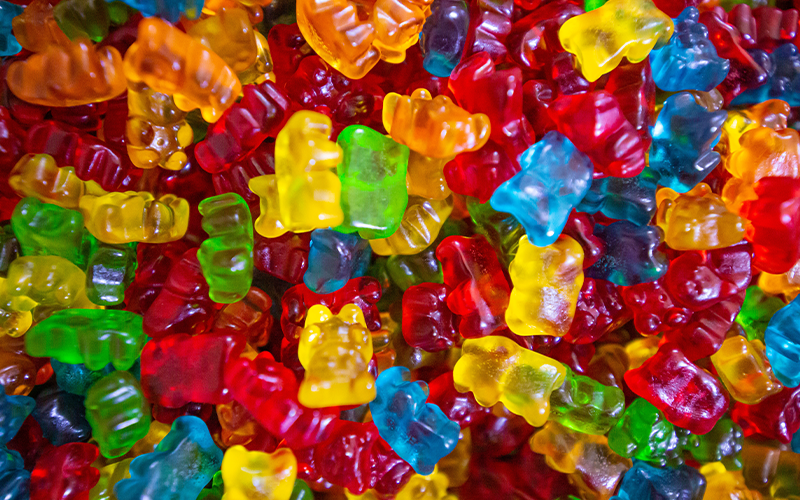
Target age: <11, 11–14
Subject: Physics, STEAM
The properties of light are fundamental to how we see the world, and there are many ways to use everyday objects to explore how light interacts with materials and our eyes to create the colours we experience. If you don’t have a glass prism to demonstrate the refraction of light, you can improvise one with a tank of water. Furthermore, students can discover additive colour mixing by crafting a Newton’s disk from cardboard and string, or explore absorption and reflection by using gummy bears instead of the classical colour filters. These themes are further explored in the article Colour magic: additive mixing and coloured shadows.
11. A fresh look at light: build your own spectrometer
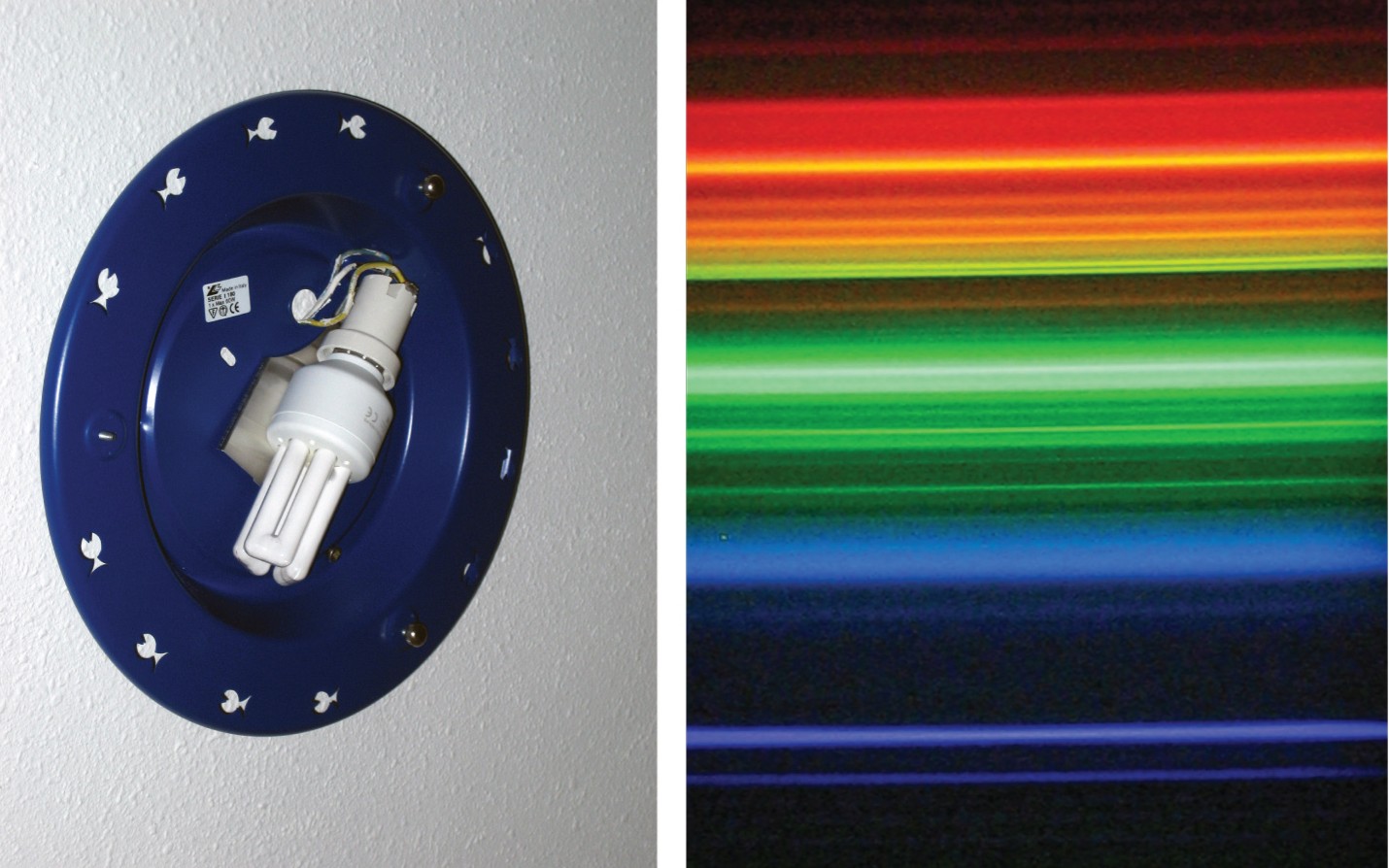
Target age: 14–16, 16–19
Subject: Physics
For a more advanced treatment of light, why not build your own spectrometer? Spectrometers split a light source into its constituent wavelengths to give a spectrum − a distinctive pattern that gives you information about the source or any materials the light has passed through. Students build a simple spectrometer from a CD and a cereal box, then use it to examine different light sources. How do the spectra of different types of light bulbs differ? What about sunlight or flames? This provides opportunities to discuss numerous curriculum topics, from refraction and the electromagnetic spectrum to the chemistry of light emission.
12. Estimation of the Sun’s temperature without leaving the school
Target age: 16–19
Subject: Astronomy/space, Earth science, Physics, Mathematics
Students might think that studying the sun would require sophisticated equipment and complex astrophysics knowledge, but in fact some of its key characteristics can be studied with fairly simple equipment. The spectrometer described above can be used to study the solar spectrum, which scientists used back in the 1800s to deduce the sun’s chemistry (and discover helium). This article describes how you can estimate the sun’s temperature using just water, sunlight, and some simple equipment, along with some physics knowledge about heat transfer and electromagnetic radiation.
13. Fantastic feats: experimenting with water

Target age: <11, 11–14, 14–16
Subject: Physics
Presenting a surprising outcome or ‘magic trick’ can be a powerful way to get students to really think about what they are seeing. This article shows how you can use water and basic materials like cups and plastic bottles to perform simple tricks that are a fantastic hook for discussing forces, gravity, pressure, and surface tension. Why doesn’t the water pour out when you turn the cup over? Why doesn’t the water leak through the holes when the lid is closed or the bottle is thrown in the air? It’s not magic; it’s just science you can’t see!
14. Building bridges: how do structures stay upright?

Target age: 11–14, 14–16
Subject: Engineering, Mathematics, Physics
Having students build something themselves can be a fantastic way to explore basic mechanical concepts like forces, loads, and centre of mass, while also developing 21st century skills like critical thinking, problem-solving, collaboration, and creativity. In this fun challenge, students work in small groups to build a model bridge from everyday materials like wooden skewers, then test its strength by piling textbooks onto it to see whose design can support the most weight. The project can also be done with collected recycled materials like lolly sticks or packaging materials to incorporate sustainability principles.






